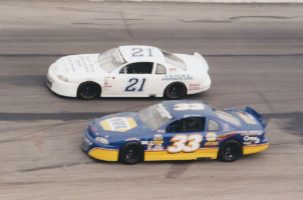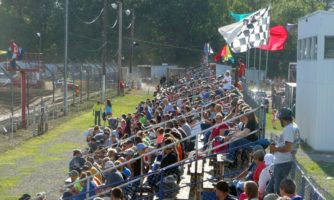INDIANAPOLIS — Two weeks ago in the Indy Grand Prix, Will Power was relieved to break his run of lackluster finishes to win for the third time at the Indianapolis Motor Speedway. All week leading up to the 102nd Indianapolis 500, he was calm, collected and stoic, going into a race he’d failed to win for so many years. In victory lane, tears poured out of the “ultimate road driver” who once said he hated ovals and he was overcome with elation, because he’d finally won the ultimate road race in open-wheel racing, Indianapolis 500.
“Overwhelming. Amazing,” Power said. “It’s funny, you forget where you are, you’re so immersed in the race. You don’t even realize. On the white flag lap I started screaming because I just knew I was going to win it. Unbelievable. Never been so excited.
“I knew you drink milk here. Believe me. I’ve seen a few of my competitors do it. Yeah, no, I just hesitated a bit because I’m not supposed to eat dairy, but I didn’t care. I just drank it.
It’s his 29th career victory in 124 starts in the Verizon IndyCar Series. It’s also his fourth career victory at Indianapolis, putting him into a tie with AJ Foyt, Jimmie Johnson, Rick Mears and Al Unser for second-most wins at the Brickyard.
“…that last restart I was very determined,” Power added. “I knew that I had to get, like, a run on these guys, at least get one of them in the first turn, which I didn’t. I got Oriol I think a lap later or something. I didn’t want Carpenter to have a shot at me. He was very quick. If he had gotten by, I think it would have been game over potentially.
Very aggressive on the restarts. In clean air, I was very aggressive on the restarts. I started in a different spot every time to get a jump on Ed. I knew if we were fighting into one, it just creates a problem. Very good restarts when you look at it. Never got challenged.”
It’s the 17th Indianapolis 500 victory for team owner Roger Penske.
“All I can say is when I came here 1951, I guess something bit me,” Penske said. “I can never get rid of it for so many years.
“We started competing here, as you know, in ’69. The success we’ve had has really been all about the team members, the people we’ve had, the great drivers, sponsors, and obviously Indianapolis Motor Speedway.
“As I said many times in the last couple days, to be able to race on Memorial Day in the biggest sporting event in the world, have America the way it is, that’s what I’m going to take away from this race. To see what we have, to see what Will has been able, 10 years with his engineer Dave Faustino. He’s won many road races, all sorts of poles. He won this race today because he was the best, there’s no question about the speed at the end, his out laps, the pit crew I take my hat off to, Jon, and Tim Cindric, because we had four great cars. That’s what you have to have here. You have to have four bullets, three bullets, whatever it takes.
“I’m just so thrilled. 17 wins. Now I have to worry about 18. I’m not going to look back, I’ll look forward. We have to be back next year.”
Ed Carpenter came home second.
“Yeah, you know, I’ll feel pretty good about this in a couple days, I think,” Carpenter said. “The team really did a great job all month long, all day long really. Pit stops were really good. It was almost like being out front early probably hurt us a little bit just because guys started saving fuel a little earlier. We got behind on the fuel save. Whatever segment Will got by us, went a couple laps further, my out lap we had traffic. One of those exchanges.
“Track position was everything we thought it was going to be coming into the day. You heard the drivers talk all week. Just couldn’t quite get it back from him. We were saving fuel through the middle part of the race when everyone was essentially trying to cut out a stop. That was a little odd.
“You never know how these races are going to unfold. I thought for the most part the team executed well. I thought there’s only a couple little things that I can reflect on in the short-term right now that maybe could have made a difference.
“All in all, I thought Will won the race and we ended up second, and we’ll be happy with that. Come back stronger next year.”
Scott Dixon rounded out the podium.
“Yeah, as soon as we pitted, right before the end of that caution, we tried to obviously take on as much fuel as possible, be the first in that scenario,” Dixon said. “We knew there was probably three or four others that were trying. Oriol looked like he was, a couple of others.
“But, yeah, we really struggled on restarts today. The first and second gear just seemed to be way out of sync to the pace of what everybody was restarting. First to be on a limiter, second I was like a sitting duck, wouldn’t accelerate, gear was way too long.
“Yeah, I don’t know, we lost a lot of positions in that scenario. But the Penske car felt pretty good. It was consistent. It was good in traffic. It was very difficult to pull off passes today. Yeah, so for me, to be honest, huge credit to the team. They did a superb job of trying to pull off that strategy. Obviously we have got very lucky with that caution with T.K., which was enough to give us a bit of a window to get to the end.
“Yeah, definitely a crazy day out there.”
Alexander Rossi and Ryan Hunter-Reay rounded out the Top-five.
Simon Pagenaud, Carlos Munoz, Josef Newgarden, Robert Wickens and Graham Rahal rounded out the Top-10.
RACE SUMMARY
Ed Carpenter led the field to green at 12:23 p.m. Compared to previous years with the DW12 package, passing was exceptionally difficult with the new universal aero package. Just as Carpenter caught the tail-end of the field, he pitted from the lead on Lap 31. Josef Newgarden, who inherited the lead, stopped the following lap. After two laps out front, Spencer Pigot pitted on Lap 34, and the lead cycled back to Carpenter.
Caution flew for the first time on Lap 47 when Takumo Sato ran over the left-rear wheel of James Davison, who was off the pace.
Zach Claman de Melo assumed the lead under the caution, but Carpenter pulled a slingshot move under him going into Turn 1 on the Lap 57 restart to retake the lead.
Caution flew for the second time on Lap 58 for Ed Jones spinning and hitting the wall in Turn 2.
Back to green on Lap 64, Tony Kanaan passed Carpenter going into Turn 1. Carpenter responded the following lap with a slingshot pass going into Turn 1.
Following Danica Patrick’s retirement from the race, following a wreck similar to Jones’s, Kanaan took back the lead from Carpenter on the ensuing restart. However, Kanaan pitted with a flat tire. After a cycle of green flag stops, Will Power cycled to the lead.
He pitted from the lead on Lap 129, followed by Ryan Hunter-Reay the next lap. Sebastian Bourdais pitted on Lap 133, and Newgarden followed suite on Lap 135. Race leader Graham Rahal ducked onto pit road to make his stop when Bourdais spun out and wrecked in Turn 4.
Carlos Munoz pitted under the caution, and the lead cycled back to Power.
Back to green with 55 laps to go, Helio Castroneves spun out, hit the outside wall, drifted down the track and slammed the inside wall near the entrance to pit road. The crowd gave him a standing ovation as he made his way on foot down pit road, on his way to the infield care center.
Back to green with 39 to go, following Sake Karem’s wreck in Turn 4, Alexander Rossi — who started the race in 32nd — worked his way into third. Power pitted from the lead with 29 to go, as did Carpenter, Simon Pagenaud and others.
In the closing laps, Oriol Servia, Stefan Wilson and Jack Harvey gambled and stretched the fuel. Even when Kanaan brought out the caution with 12 to go, they stuck to their plan and stayed out during the caution.
Servia spun the tires on the restart with seven to go and the lead was usurped by Wilson, going into Turn 1. He ran out of fuel with five to go, however, and lost the lead to Power, who drove on to score the victory.
NUTS & BOLTS
The race lasted two hours, 59 minutes and 42 seconds, at an average speed of 166.935 mph. There were 30 lead changes among 15 different drivers, and seven cautions for 41 laps.
Power leaves Indianapolis with a two-point lead over Rossi.











